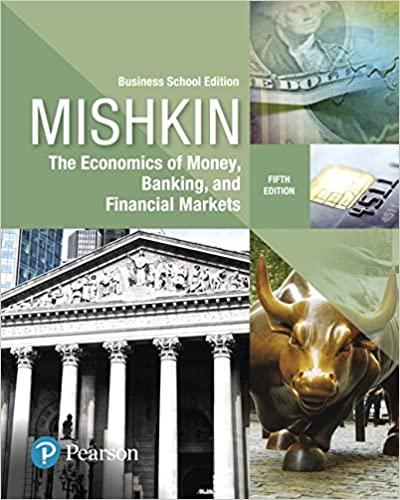

In a bank branch, the deposit and withdrawal demands are served by two different clerks, clerk A deals with deposit only and clerk B deals with withdrawal only. There are separate queues for each type of demands. The inter-arrival time (I.A.T.) distribu- tion of each type of demands and the distribution of service times (S.T.) of the clerks are given in the following table: I.T.A (mins.) Deposit(%) Withdrawal(%) 0-2 12 25 2-4 35 15 4-6 38 35 6-8 15 25 S.T. (mins) 2 Clerk A and B (%) 10 3 40 4 30 5 20 u (a) Use the random numbers below to simulate the operations of the ten incoming demands (five deposit and five withdrawal). Random numbers: Deposit 1 2 3 4 5 Inter-arrival Time 79 91 - 39 98 89 Service Time 23 10 27 13 16 Withdrawal 1 2 3 4 5 Inter-arrival Time 23 59 42 04 17 Service Time 02 46 69 51 27 (b) From the simulation in part (a), estimate the average waiting time of the deposit demands and the withdrawal demands, respectively. Why are your estimates not reliable and how would you improve it? (c) Suppose both clerks A and B have been given training to handle both types of functions and the bank decides to merge the two queues of the two types of functions into a single queue (that is, one queue with two clerks). Simulate the operations with the new setting for the service of ten incoming demands using the same random numbers as in part (a). Hence, estimate the average waiting time of all the incoming demands. In a bank branch, the deposit and withdrawal demands are served by two different clerks, clerk A deals with deposit only and clerk B deals with withdrawal only. There are separate queues for each type of demands. The inter-arrival time (I.A.T.) distribu- tion of each type of demands and the distribution of service times (S.T.) of the clerks are given in the following table: I.T.A (mins.) Deposit(%) Withdrawal(%) 0-2 12 25 2-4 35 15 4-6 38 35 6-8 15 25 S.T. (mins) 2 Clerk A and B (%) 10 3 40 4 30 5 20 u (a) Use the random numbers below to simulate the operations of the ten incoming demands (five deposit and five withdrawal). Random numbers: Deposit 1 2 3 4 5 Inter-arrival Time 79 91 - 39 98 89 Service Time 23 10 27 13 16 Withdrawal 1 2 3 4 5 Inter-arrival Time 23 59 42 04 17 Service Time 02 46 69 51 27 (b) From the simulation in part (a), estimate the average waiting time of the deposit demands and the withdrawal demands, respectively. Why are your estimates not reliable and how would you improve it? (c) Suppose both clerks A and B have been given training to handle both types of functions and the bank decides to merge the two queues of the two types of functions into a single queue (that is, one queue with two clerks). Simulate the operations with the new setting for the service of ten incoming demands using the same random numbers as in part (a). Hence, estimate the average waiting time of all the incoming demands








